back to MY humble COLLECTION
SPIKE & PIPE TOMAHAWKS | HAMMER POLL TOMAHAWKS | TRADE, BELT BOARDING AND BAG AXES | SOME OF MY FOUND TX FLINT | RAMBLINGS.
TRADE, BELT BOARDING AND BAG AXES
Two of my favorite and often overlooked forms of the "tomahawk" are the so called rifleman's belt and bag axes. These axes were named for the places they were most commonly carried, tucked in the belt or in the mountain man's or fur trader's possible's bag. The size of these axes runs from substantial to downright puny. Belt axes, {Heads range from 4 -6 inches tall} some with hammer polls, were often standard issue for French and Indian and Revolutionary war era armies. As quite often in colonial America there were no arms to issue, solders were required to provide their own. Their choices were either a sword or a belt hatchet or tomahawk as they were sometimes called. As a sword lacked usefulness on the homestead during periods of peace, a belt axe was understandably the most practical choice. Another point that needs to be made is the fact while these axes certainly functioned part time as tools they were also counted on as a second line of offense after firearms were discharged. For this reason their role as weapons cannot be overstated. Bag axes {Heads about 4 inches or less} on the other hand are quite often small enough to have quit often only been dangerous weapons to the ones wielding them. Bag axes were primarily survival and butchering tools. I'm of the opinion that whacking ones foe with one of these might result in more damage to the whacker then the whackee. I don't know if it is just me, but sometimes I'll catch myself lightly tapping myself in the head with one of these things just to get a feel for what they might be able to do in a tough situation and I've decided I woulden't take on a upset bunny rabbit with a bag axe. However ,a few of them do carry just enough weight to them to knock a divot out of ones skull in a tough spot.These miniature axes/tomahawks are interesting and pretty nifty as frontier/fur trade collectable's and I've seen them go relatively cheap on eBAY as salesmans samples, toys etc. As time has passed they are starting to get the recognition they deserve as the highly collectable fur trade era tools that they are.
belt axes
just to show that even the smallest bag or belt axe on a long haft has some umph to it I've buried the blade of my smallest bag axe in the bark of the huge pecan tree outside my back door I have little doubt it "could" cleave a skull in a pinch.
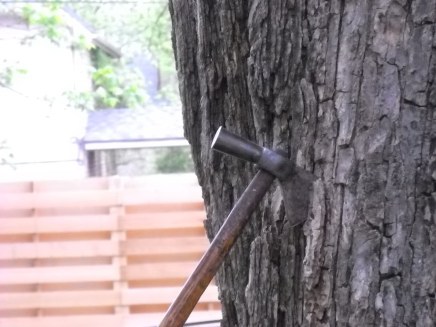
there was a time when the average frontier type guy would carry a small belty as commonly as others carried bowie knives of course they served as tools part time but weapons too some very well documented ones are seemly too small to be effective head bashers don't kid your selfeven a pretty small piece of sharp metal on a stick could punch a slot in your skull in a hurry
another under rated form of tomahawk
CLASSIC RIFLEMAN'S "Kentucky style" BELT AXE CIRCA
MID TO LATE 1700's
4 1/2 X 2 1/4 10 INCH ORIGINAL HAFT
WEDGE SHAPED EYE
A five star complete early piece made before the 1800's American habit of adding hammers iron plates etc. to the poll circa 1750-90
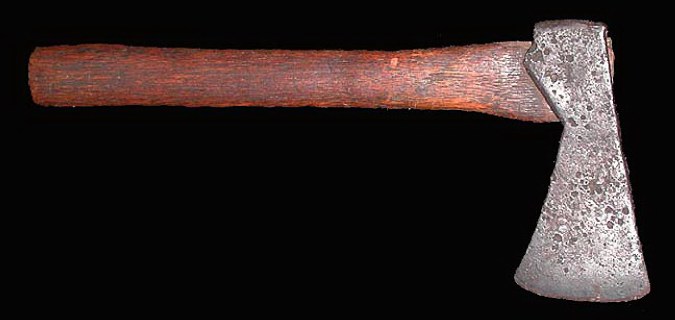
NY this one has a steel bit stll pretty sharp
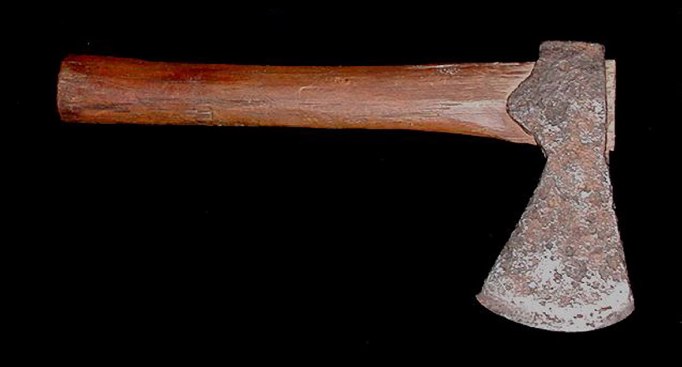
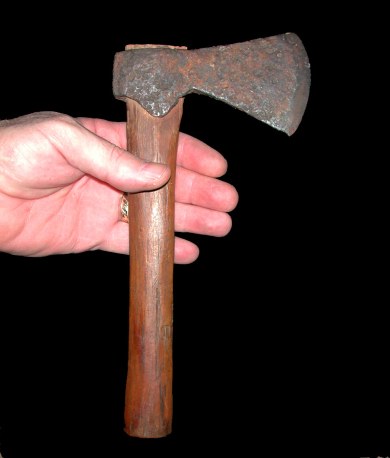
NH 4 5/8 X 2
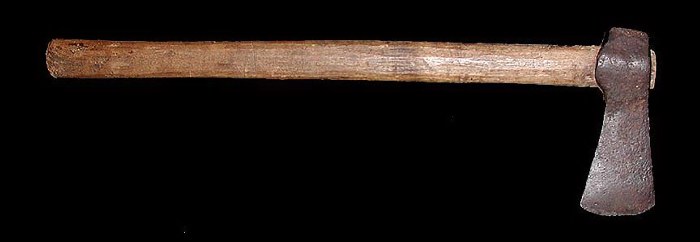
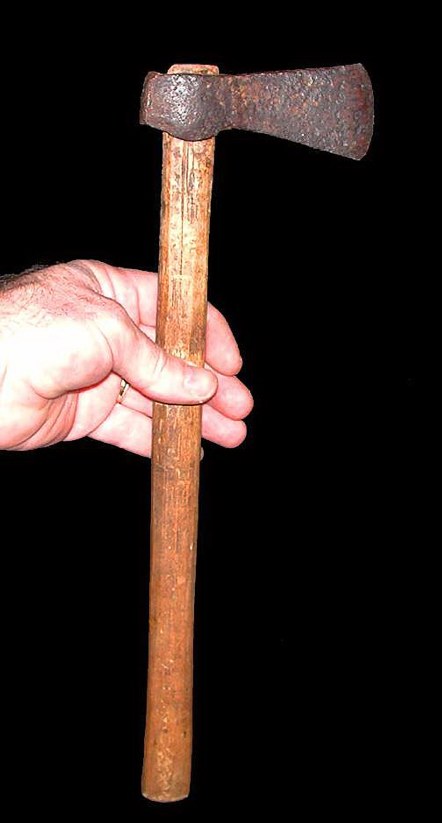
Great little bag/belt axe 3 3/4 X 1 3/8

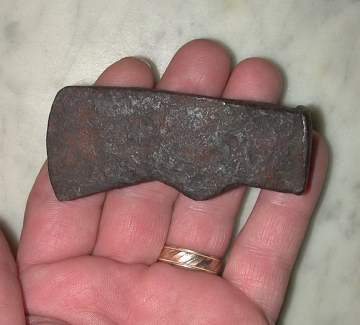

BAG AXE W/ORIGINAL HAFT
3 1/8
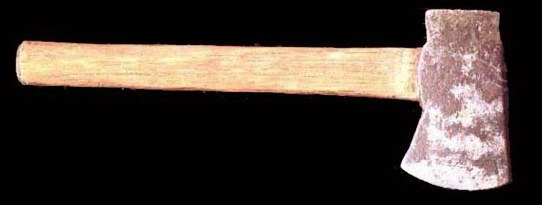
three of my fav hammer poll and bag axes
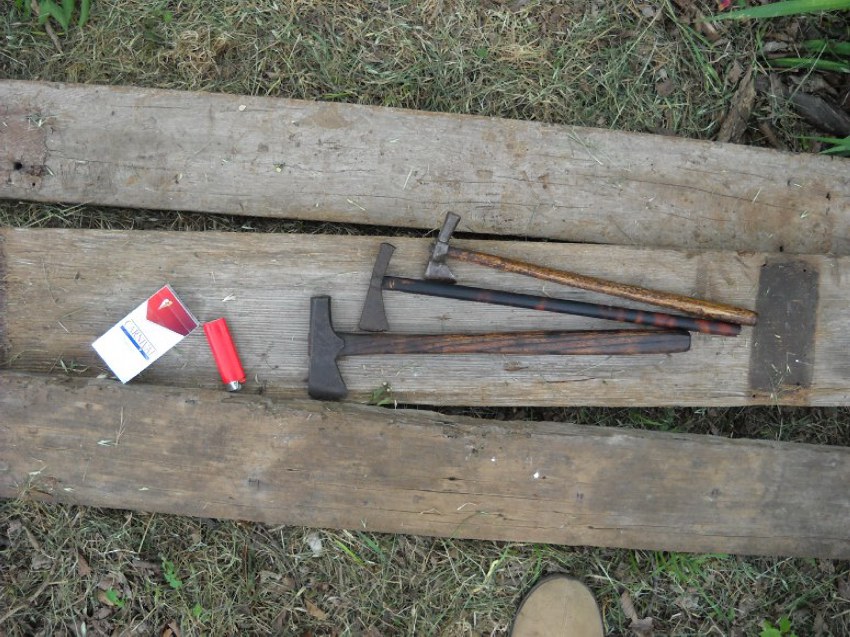
TRADE AXES
EARLY TRADE AXES HAVE HEADS THAT ARE GENERALLY OVER SIX INCHES
TALL=LONG WITH BLADE EDGES OVER THREE INCHES WIDE.
THESE AXES FUNCTIONED AS TOOLS AS WELL AS WEAPONS
AND WERE OFTEN TOO LARGE TO BE CARRIED TUCKED
INTO A BELT, NEVERTHELESS THEY WERE USED EXTENSIVELY BY
ALL FROM NATIVE AMERICAN MEN AND WOMAN TO REVOLUTIONARY
WAR SOLDERS. THESE AXES ARE THE ROOT OF THE TOMAHAWK AS
WE HAVE COME TO KNOW AND LOVE IT AND SOME DATE
BACK TO THE EARLIEST TRADE AND METAL WORK IN THE
NEW WORLD. CURRENTLY THESE ARE THE BEST BANG FOR
YOUR BUCK ON THE OPEN MARKET AND FAKES, WHILE NOT
UNHEARD OF, ARE NOT NEAR AS PREVELANT AS IN THE OTHER
FORMS SUCH AS PIPE AXES. THIS IS DUE IN PART TO THE SHEER
NUMBERS OF THESE AXES PRODUCED FROM 1700-1840S.
A COMMON STORY GOES THAT AROUND THE TURN OF THE
CENTURY, IN AREAS OF HEAVY TRADE OF THESE AXES, THEY
WERE SO COMMON THAT THE FARMERS HAD A BUSINESS ON THE
SIDE COLLECTING THEM WHILE PLOWING THEIR FIELDS TO BE SOLD
AS SCRAP METAL.
SINCE BEGINNING THIS SITE A NEW FORM OF "FAKERY" HAS
APPEARED, THAT IS IMPORTED AXES, MANY WITH ORIGINAL
HAFTS, MOST FROM PORTUGAL.
THE MAIN THING WHEN TRYING TO SEPARATE THE TWO IS THAT
MOST OF THE PORTUGUESE AXES ARE LARGE FELLING TYPE AXES
THAT HAVE UNFAMILURE TOUCH MARKS AND ARE FOR THE MOST
PART OVER SIX INCHES LONG/TALL.
THIS IS GOING TO MAKE THE WELL DOCUMENTED , ONES WITH
WELL KNOWN NEW WORLD TRADE MARKS AND
SMALLER TRADE AXES UNDER SIX INCHES THAT WERE ALMOST
PRODUCED SOLELY FOR THE AMERICAN TRADE GO UP IN VALUE
Marked "Brooks" W/Original haft
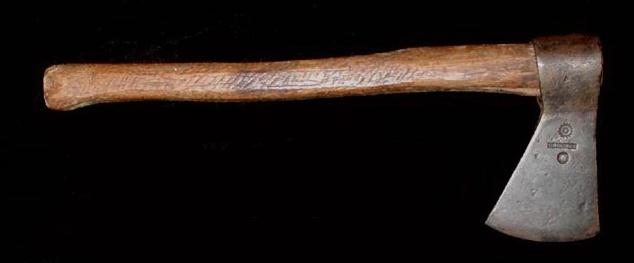
Three trade axes the last of which I think is a toy as opposed to a bag axe.
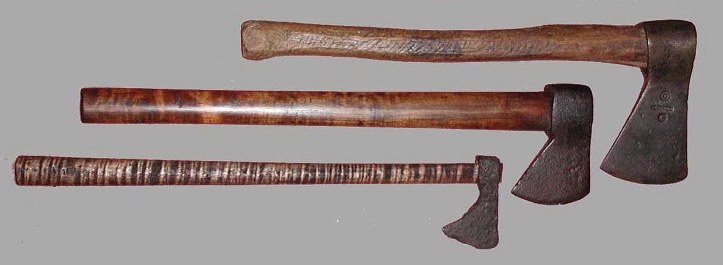
The seller of the axe below said he thought it looked medieval , I disagree
I think it looks biblical! From Central Tx I'm thinking it is probably either
Spanish or German and appears to me to be at least
early 1700s
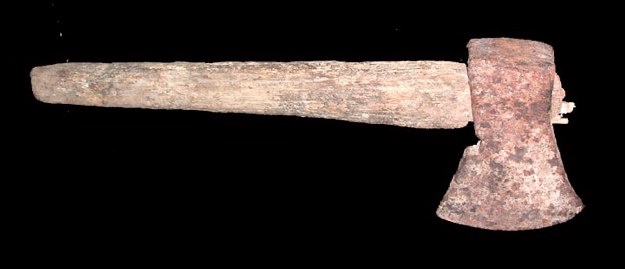
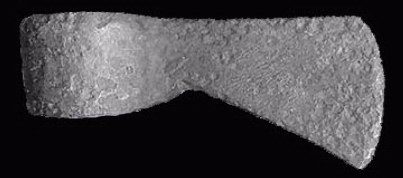
The legendary "deal of the century" $10 trade axe from Canada.
The ebay listing for this axe head said "Early 1900s axe head" surely they must have
meant "Early 1900th century axe head" so at the the end of the auction I was the only bidder ,
but hey, what cha gunna do?
Perhaps this one should be in with the belt/bag axes, however
trade axes are so rare in this diminutive size
at 3 5/8 that I felt it necessary to include it in the trade
axe section to show the variety of sizes of the form.
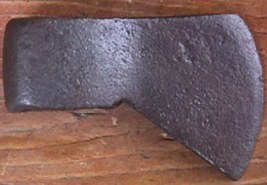
Close to actual size above

Other rare forms of tomahawks
My one of my fourAmerican boarding axes
N.H. Type III American Boarding axe w/cut off and mushroomed spike.
It is marked "U.S./ N.Y.W. / J.T.". = U.S. Navy Yard Washington
Inspected by Captain
Joseph Tarbell during the War of 1812
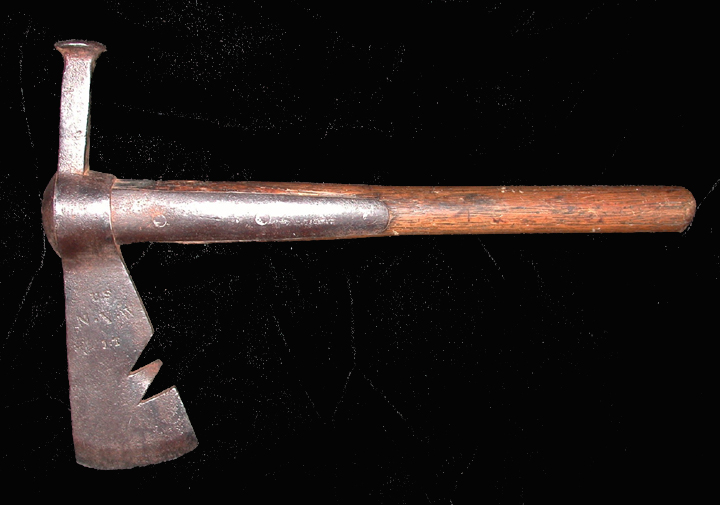
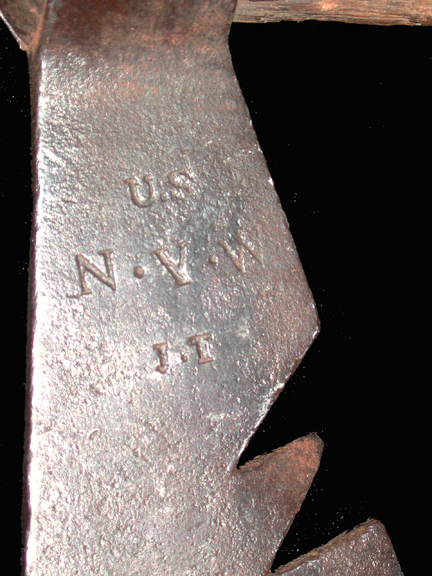
the top ones a French 1786 model next down a English classic"tomahawk type w/broad arrow anf Bard of ordinance
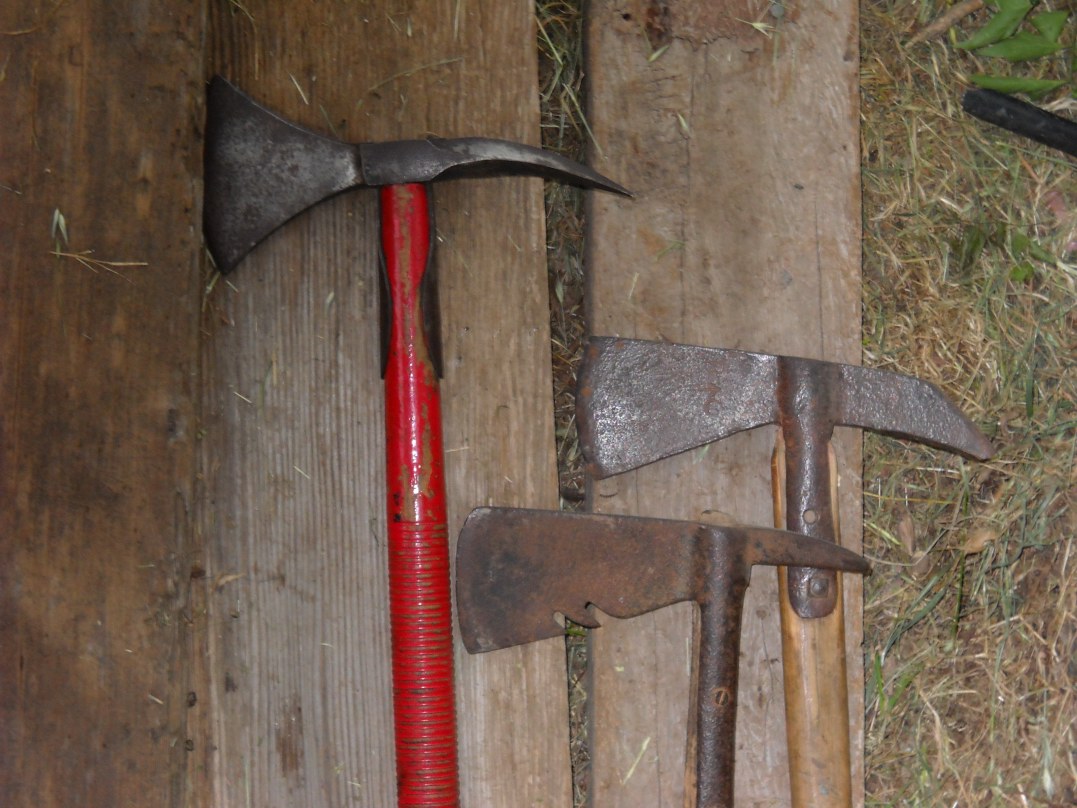
"Trade Halberd"
Halberds are among the earliest form of battle axes,
with origins in Europe. When acquired by native
Americans through war or trade the 6 to 8 foot handles
were commonly cut down to tomahawk dimensions while
other halberds were specifically produced for the trade.
These rare "trade halberds" were made as gifts for
important native Americans and were designed to be
used as is, with one hand with no socket or means to
attach them to a pole. I believe this is such an "trade halberd".
Found in SW New Mexico in 1969.
9'' X 18''
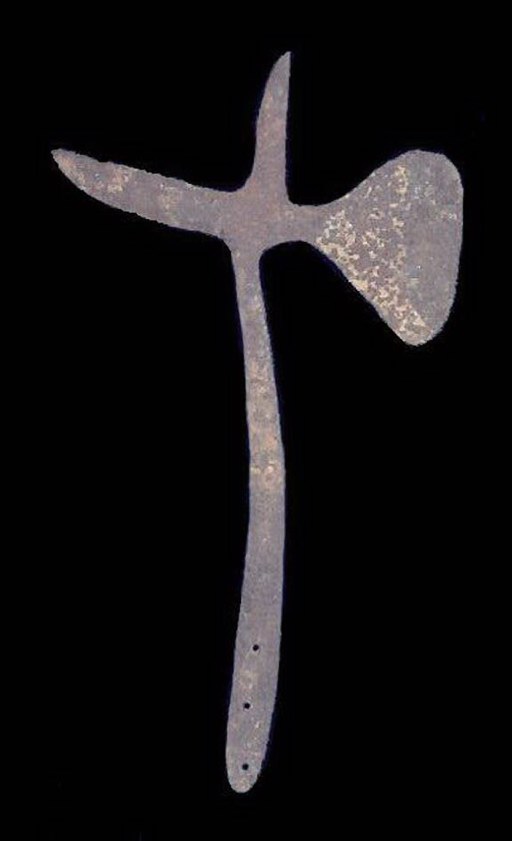
some of the verity
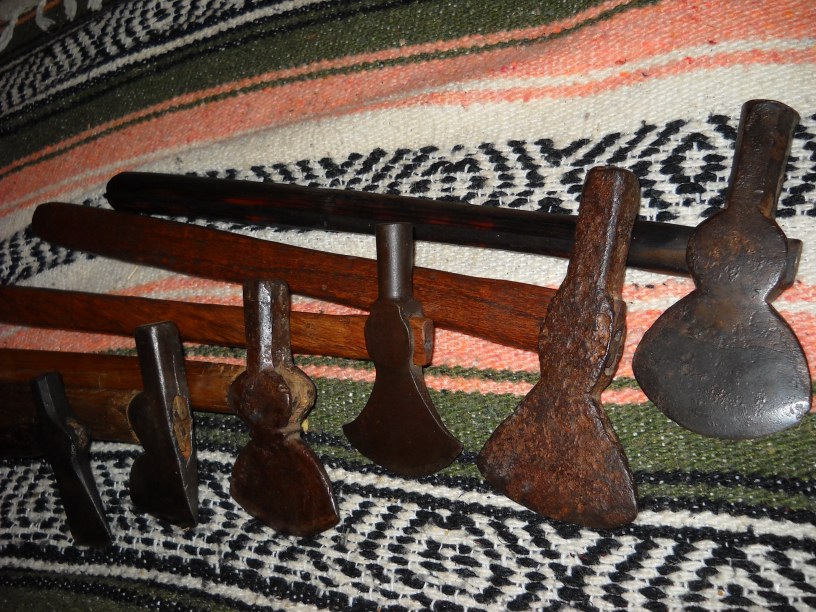
THIS IS AN UNALTERED SPONTOON BLADE FOUND
BY A WOMAN SURFACE HUNTING ARROWHEADS IN
WEST TEXAS'S DAVIS MOUNTAINS.
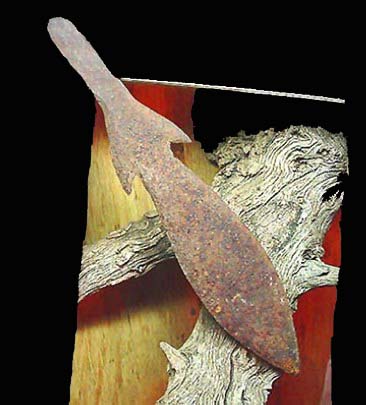
NEXT PAGE

